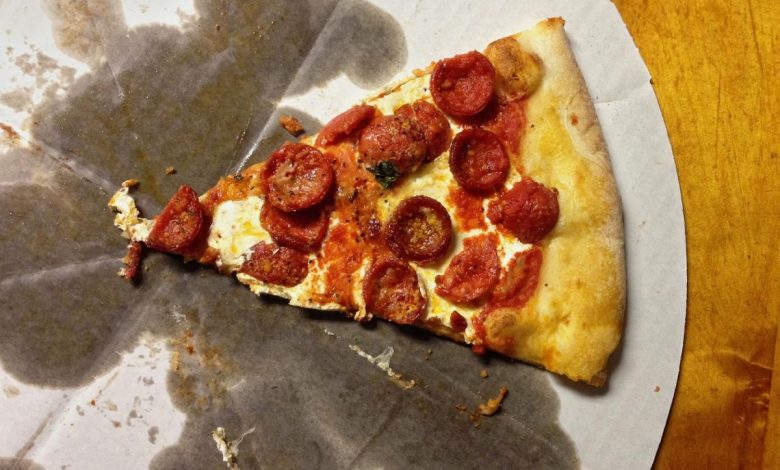Safe Pizza Consumption: Leftover Pizza Can Be A Breeding Ground For Bacteria And Cause Food Poisoning

Safe Pizza Consumption: A pizza that has become a breeding ground for bacteria can lead to gastrointestinal illnesses, vomiting, diarrhea, and possibly fever.
Do you leave the leftover pizzas from a party on the table to eat them for breakfast? Experts strongly advise against this and warn that the pizza has been left too long in the “danger zone,” which is between 4.5°C and 60°C (40°F to 140°F) — a temperature range where bacteria can rapidly multiply, increasing the risk of food poisoning.
Safe Pizza Consumption, Therefore, next time, place leftovers in the refrigerator within two hours, and try to wrap the pizza slices individually in plastic wrap or aluminum foil. This way, the pizza won’t absorb the refrigerator’s odors, and the risk of food poisoning will be reduced.
Safe Pizza Consumption: Leftover Pizza Can Be A Breeding Ground For Bacteria

Brian Labus, an infectious disease epidemiologist and assistant professor at the University of Nevada, warns against the common but mistaken belief that pizza remains safe to eat even if left out of the refrigerator for a long time. He emphasizes that pizza, like other foods, should be stored under the specified conditions.
Safe Pizza Consumption, He adds, “No one would eat cheese or a slice of dry pepperoni that’s been left on the table overnight, but as soon as these are turned into pizza, they somehow seem safe; however, that is not the case at all.”
According to the rules of the government agency responsible for agriculture, production, and food safety in the United States, food can only be kept in the “danger zone” for up to two hours. However, if the temperature is above 33°C (91°F), food can only be left out for one hour. Since you can’t tell if pizza has spoiled just by looking at it, extra caution is needed.
Safe Pizza Consumption, A pizza that has become a breeding ground for bacteria can cause gastrointestinal illnesses, including vomiting, diarrhea, and possibly fever. Common bacteria like Salmonella, Shigella, and Campylobacter are among the most prevalent and can cause diarrhea with fever a few days after consumption. Other bacteria like Staphylococcus aureus can also multiply on food and leave behind toxins that cause vomiting within a few hours of eating.
Safe Pizza Consumption, Although the cooking time and temperature can kill these bacteria, this doesn’t mean we should neglect food safety for pizza and leave it out of the refrigerator all night.
Safe Pizza Consumption: How To Store Pizza
Safe Pizza Consumption, According to the regulations of the United States Department of Agriculture, pizza can be stored in the refrigerator for up to four days, but it is essential to keep the leftover pizza separate from other contaminants in the fridge. To best preserve the pizza’s flavor, avoid storing it in the box, as it may dry out quickly and absorb the odors of other foods. The best practice is to wrap it in food-grade plastic wrap and then aluminum foil to minimize its contact with the refrigerator environment.
Also Read:
Health Benefits Of Coffee: Seven Reasons Why Drinking A Cup Of Coffee Is Good For Your Health
New York University Study: Kidney Donation Is Less Risky Than Previously Thought
Olive Oil Health Benefits: Olive Oil Could Help Combat Common Vaginal Infections In Women
Eating Breakfast And Child Well-being: Children Who Eat Breakfast Are Happier




